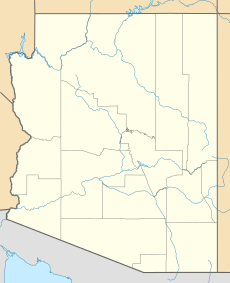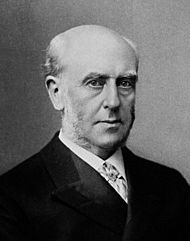Geikie Peak facts for kids
Quick facts for kids Geikie Peak |
|
|---|---|
| Geike Monument | |

Aerial view of Geikie's east-southeast aspect.
(Scylla Butte lower right corner) |
|
| Highest point | |
| Elevation | 5,005 ft (1,526 m) |
| Prominence | 625 ft (191 m) |
| Isolation | 1.22 mi (1.96 km) |
| Parent peak | Peak 5180 |
| Naming | |
| Etymology | Archibald Geikie |
| Geography | |
| Location | Grand Canyon National Park Coconino County, Arizona, US |
| Parent range | Coconino Plateau Colorado Plateau |
| Topo map | USGS Havasupai Point |
| Type of rock | limestone, shale, sandstone |
| Climbing | |
| Easiest route | class 5.4 climbing |
Geikie Peak is a mountain peak in the Grand Canyon. It stands 5,005-foot (1,526 m) (about 1,525 meters) tall. You can find it in Coconino County, in the northern part of Arizona, United States.
This peak is located about nine miles (14 km) (14.5 kilometers) northwest of Grand Canyon Village. It sits just north of Diana Temple. To its south is Scorpion Ridge, across the deep Granite Gorge.
You can reach Geikie Peak using the Tonto Trail. This trail goes almost all the way around the base of the peak. Geikie Peak is very tall compared to its surroundings. It rises over 2,600 feet (790 m) (792 meters) above the Colorado River in just one-half mile (0.80 km) (0.8 kilometers). The area around Geikie Peak has a cold semi-arid climate. This means it's usually dry and can have cold winters.
History of Geikie Peak's Name
The peak was first named "Geikie Monument" in 1901. It was named by George Wharton James. The name honors Sir Archibald Geikie (1835–1924). He was a famous geologist from the United Kingdom. Sir Archibald Geikie studied the rocks and land in the Grand Canyon. He found proof there to support his ideas about how erosion shapes the Earth.
The official name, Geikie Peak, was chosen in 1908. This was done by the U.S. Board on Geographic Names.
What Geikie Peak is Made Of: Geology
Geikie Peak is mostly made of a type of rock called Redwall Limestone. This rock formed during the Mississippian period. On top of the Redwall Limestone, there's a small cap of rock from the Supai Group. These rocks formed during the Pennsylvanian and Permian periods.
Below the Redwall Limestone, you'll find the Tonto Group rocks, which are from the Cambrian period. Even deeper, at the level of the Colorado River in Granite Gorge, are the oldest rocks. These are called Vishnu Basement Rocks. They formed in the Palaeoproterozoic era, which was a very long time ago.
Scylla Butte: A Nearby Feature
At the eastern end of Geikie Peak, there's a smaller rock formation called Scylla Butte. This feature is named after Scylla. In Greek mythology, Scylla was a monster. This naming tradition was started by Clarence Dutton. He liked to name Grand Canyon features after gods and monsters from myths.
Scylla Butte rises about 400 feet (122 meters) above the Tonto Trail. The trail almost completely circles it. The very first time someone climbed to the top of Scylla Butte was on March 18, 1978. This climb was made by James Kirshvink and James Ohlman.





